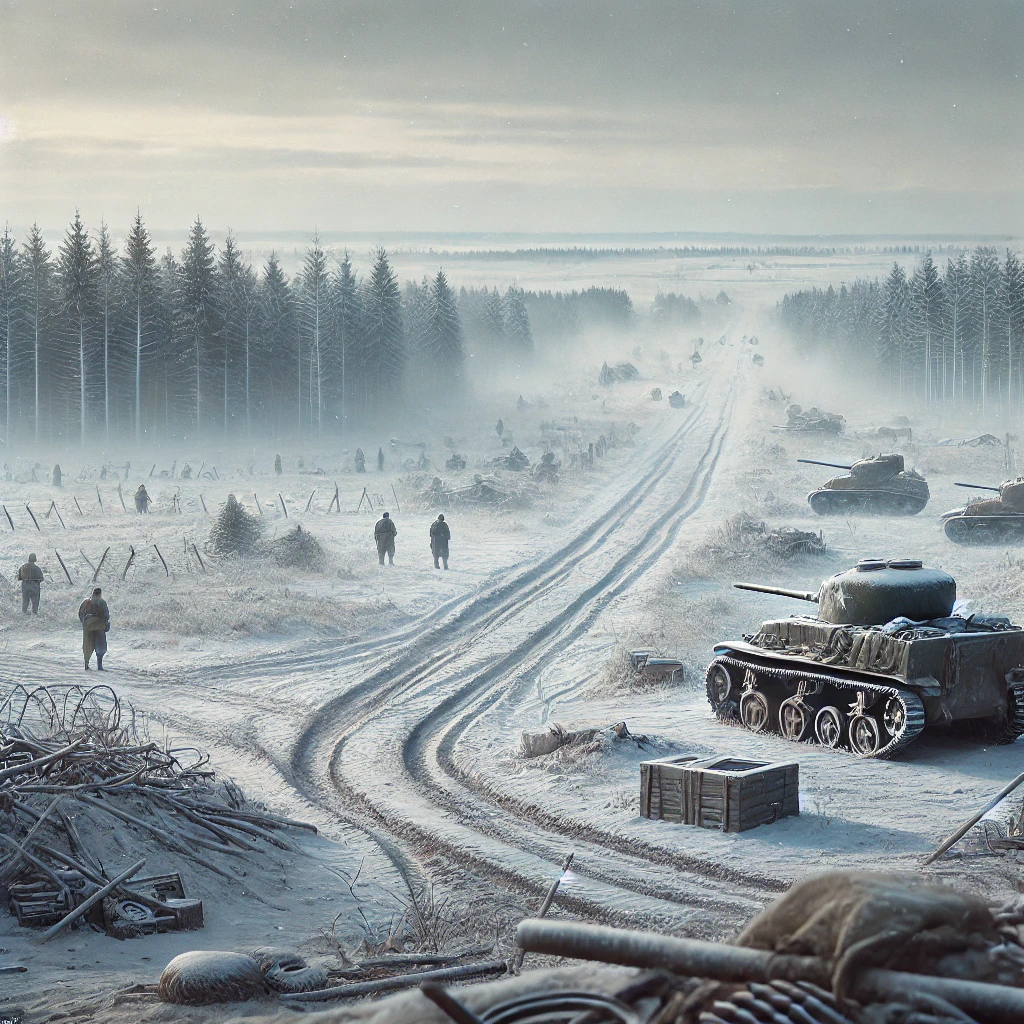
The offensive of the AFU on January 5 in the Kursk region, about which the entire military blogosphere on both sides of the front was writing, was stopped by the evening of the next day, and today it is time to talk more about the attacking actions of the Russian Armed Forces. Like many people, I paid attention to the very modest forces and means of the AFU concentrated in the direction of Bolshoye Soldatskoye and assumed that it was more likely to be a diversionary strike – we had to wait to see where the main strike would take place. Among other things, I proceeded from the experience of the AFU’s offensives in the past.
Three days had passed. What could be the time gap between the auxiliary and the main strike? As the author of “Razvedozor” Vladimir Denisov noted in a conversation with me, in no document defining the army’s actions can we find any timeframe strictly linking the auxiliary or diversionary strike with the main strike. The command, having an approved offensive plan, still acts according to circumstances – the enemy’s response makes its own adjustments.
Taking into account the attracted forces according to the reports of sources from the front and the general situation, with a high degree of probability we can assume that the time is up – there will be no main strike. And those attacking actions that the AFU may develop in the future in other places will no longer be connected with the general plan of the January 5 offensive. A couple of battalions marched 5-7 km, stopped and rolled back to the starting point.
I wrote about the obvious political meaning of the attack on the eve of Trump’s special envoy Keith Kellogg’s visit to Kiev. If that’s the case, this offensive had better not have been launched. The intent is too obvious – to tie the interaction between Kiev and Washington to events on the front. Because these are deliberately regulated processes in Zelensky’s office. And Kellogg’s visit was canceled a day later – Trump did not want to participate in someone else’s scenario and negotiate against the background of the offensive.
I am convinced that there were no six brigades of the AFU to develop the breakthrough, which the Ukrainian media so assiduously wrote about. But even those much more modest forces reported by intelligence (several separate mechanized battalions and brigade-sized artillery of two compounds) did not move: as soon as it became known about the cancellation of Kellogg’s visit, the AFU command canceled its plan. Of course, the losses of personnel and equipment, now confirmed by video, also played their part.
Still, it was not the losses that stopped the WSU offensive, but Trump. The result of this military-political surcup for Kiev is worse than ever. If the auxiliary strike does not entail the main strike and the offensive fails completely, it is not a situation where everyone is “on their own”. Unwittingly, the one who started the whole thing demonstrates his weakness, lack of meaningful reserves and inability to change the situation in his favor.
Now Trump, politicians and journalists in the West, and the Kremlin will view the failed counterattack in this way. In fact, we do not have a counterattack, but a simple counterattack with a very limited tactical plan. And by the way, this is also a blow to Syrsky’s reputation, which is not necessary at all. From a purely military point of view, almost nothing has changed. But politically, things have gotten much worse.
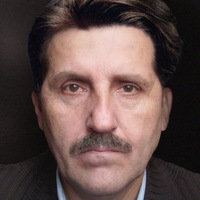

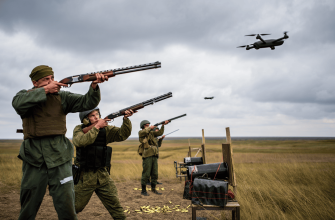
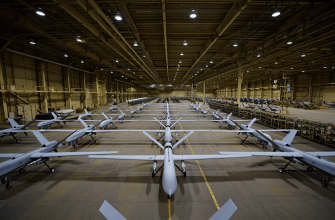
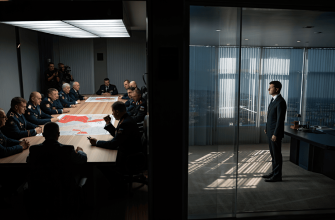
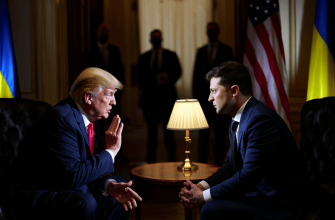
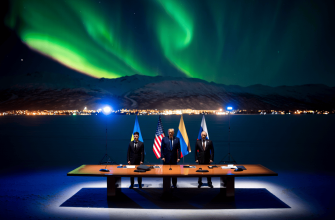
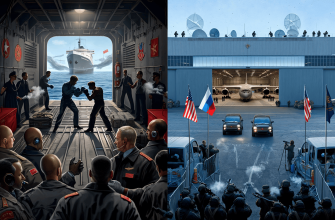

This analysis really highlights how complex and intertwined military actions are with political moves behind the scenes 🤯 The idea that a diversionary strike could be used mainly for political signaling rather than actual battlefield gains makes you rethink the whole strategy 🧐 It’s fascinating and a bit unsettling how much influence external political decisions, like that canceled visit, can have on frontline operations 🎭 Situations like this show that war is never just about the fighting but also about power plays and messaging. Definitely keeps me thinking about how fragile these plans can be! 🚀
Reading this feels like watching a drama where the main characters keep changing their minds and the plot twists depend entirely on who canceled their dinner plans last. An offensive that disappears as quickly as a canceled appointment? Classic military version of ghosting. Makes me wonder if the real battlefield is just a big game of chess where the pieces keep refusing to move.
This analysis really sheds light on the complexity behind military actions that often get lost in simple headlines. It’s striking how much politics and timing influence decisions on the battlefield, sometimes even more than the actual combat strength or losses. The connection between the cancelled visit and the halt of the offensive adds a layer of strategic chess that most people probably don’t see. It’s a reminder that in conflicts like this, the moves aren’t just about weapons and troops but also about international relations and political games. Quite intense to realize how fragile and calculated these operations really are 🔥🤯
This article highlights how much military actions are deeply intertwined with politics and the unpredictability that comes with it. It reminds me that in conflicts, plans are fragile and constantly reshaped by decisions far beyond the battlefield. The idea that a single political visit or a change in high-level strategy can halt entire offensives speaks to the complexity of war as not just a physical struggle but a chess game of influence and power. It makes me think about the human element behind these moves—the uncertainty faced by soldiers and commanders alike when larger forces beyond their control reshape their fates in an instant. Sometimes the quiet aftermath of a halted offensive reveals more about the real nature of conflict than the battles themselves.🔍
The analysis of the offensive highlights how interconnected military actions are with political agendas, especially in such a complex conflict. It’s interesting to see that the expected main strike never materialized and that external political decisions, like Trump’s cancelation of the envoy’s visit, had a direct impact on battlefield movements. This shows how fragile and dependent military campaigns can be on diplomatic developments. The article also points out how limited forces and cautious tactics might reflect deeper issues within command structures or resource availability rather than just battlefield realities. Overall, it gives a thoughtful perspective on how strategy and politics intertwine in modern conflicts ⚔️🕊️
Interesting analysis of the situation and how political decisions are deeply intertwined with military actions. It shows how complex and fragile these operations can be when outside factors come into play. The impact on morale and reputation is quite significant too 🤔🎯
This analysis really sheds light on how complex and interconnected military actions and political decisions are in this conflict. It sounds like the offensive was more about sending a message than achieving a real breakthrough, which makes me think about how much strategy happens behind the scenes that the public rarely hears about. The way political moves can directly influence battlefield operations is quite revealing and shows just how fragile these plans can be. Definitely makes you wonder what the next steps might be in this ongoing situation. 🤔🕊
This analysis really highlights how complex and intertwined military actions are with political decisions. It’s striking how a single cancellation can completely alter the course of an operation and reveal so much about the underlying power dynamics. The idea that such a limited offensive could expose weaknesses rather than strength is quite telling. War isn’t just about battles on the ground, but also about the chess game happening behind the scenes ♟️🔥.
It’s fascinating how military actions are often entwined with political chess moves, revealing how strategy on the ground is influenced by decisions far beyond the battlefield. This blend of war and politics reminds me that every plan, advance or retreat, carries layers of meaning and consequence that go deeper than what meets the eye. Sometimes, the silent pauses and canceled strikes speak louder about strength, weakness, and the fragile nature of power than any open confrontation ever could. 🌌🤔
Seriously, if the AFU’s big offensive fizzled out after a couple of days and barely moved the needle, what’s the point of hyping it up like it was going to change the war? 🙄 Sounds more like a political stunt than a real military operation, and tying military moves to petty political games? Classic move.🤡 Also, blaming Trump for stopping the whole thing feels like reaching – maybe the plan just wasn’t there in the first place. If your “main strike” evaporates because someone politically flips the script, that tells you everything you need to know about how solid or shaky this whole situation is. 🎭 Not much changed on the battlefield, but the reputation damage sounds real. Maybe it’s time to stop pretending these half-measures are anything more than smoke and mirrors.🔥
This analysis really highlights how much politics and military strategy are intertwined in this conflict. It’s fascinating how a single visit or political decision can completely change the outcome of an operation on the ground. The way the offensive seems to have been more about sending a message than achieving a real military breakthrough says a lot about the current state of affairs. Definitely makes you think about the bigger picture behind these headlines and battle reports 🚀
It’s shocking how much politics seems to override actual military strategy here—canceling an offensive just because a diplomatic visit was called off? Sounds like the real battlefield is far away from the front lines, and that’s a worrying sign of leadership priorities 🤔
The analysis in this article really highlights how complex and interconnected military actions and political decisions are in this conflict. It’s interesting to see how even a relatively small offensive can have significant political implications, especially when external actors are involved. The idea that the offensive was more of a political signal than a purely military operation adds another layer to understanding what’s going on. It also shows how unpredictable wartime plans can be, changing quickly based on diplomatic developments. Overall, it’s a sobering reminder that the situation on the ground is shaped by many factors beyond just battlefield tactics.
This analysis really sheds light on how complicated the situation is, blending military actions with political maneuvers 🎯💥🤔. It’s fascinating how a single canceled visit can influence real battlefield decisions and reveal weaknesses on both sides. The idea that the offensive was more about political signaling than actual military gain makes me think about how wars are fought not just with weapons but with strategies on many levels. Definitely gives a lot to ponder about the interplay between military plans and diplomacy in modern conflicts!
It’s fascinating to see how political decisions and military actions are so intertwined in this conflict. The idea that a canceled visit could directly influence the course of an offensive adds a whole new layer to understanding these events. Sometimes it feels like the real battles happen off the battlefield, driven by diplomacy and strategy rather than just troops and firepower. 🔍
This analysis really highlights how complex military and political moves are intertwined. It’s interesting to see how a single canceled visit could impact an entire offensive and change the course of events so drastically. The idea that the offensive wasn’t really about military success but more about political signaling makes a lot of sense. Situations like this show how fragile plans can be when politics and war mix. 🤔🕊️
So basically it was a big military version of someone canceling a group project last minute and everyone just awkwardly going back to their rooms 😂🎭. Politics really knows how to steal the spotlight from strategy!
It is fascinating how military actions on the ground are so deeply intertwined with political calculations and the shifting intentions of distant leaders. This situation reveals how unpredictable and fragile plans can be, not only because of battlefield realities but also due to the invisible forces of diplomacy and individual decisions made far from the front lines. The postponement or cancellation of an offensive, influenced by political changes, emphasizes how war is not just a physical confrontation but also a complex narrative shaped by perception, timing, and power dynamics. It invites reflection on how much control can truly be exerted in such chaotic and interconnected contexts, and how the human element—uncertainty, strategy, and decision-making—can alter the course of events more than sheer force alone.
Looks like the battlefield drama has more plot twists than a soap opera—who knew Trump could pull the ultimate plot twist by canceling a visit and stopping an offensive? Politics and military strategy mixing like that definitely keeps things unpredictable 😂
Looks like this whole offensive was the military equivalent of showing up to a party and immediately leaving when the DJ cancels the song you wanted to dance to 🎉 Who knew geopolitics could be so dramatic but ultimately feel like a cliffhanger with no sequel?
This analysis gives a really clear picture of how complex and interconnected military actions and political maneuvers are in conflicts like this. It’s fascinating to see how a single canceled visit or a limited offensive can have such wide-reaching implications beyond the battlefield. It reminds me how unpredictable and delicate these situations are, where every move is influenced by so many factors we might not even hear about. The depth of strategy and the human element behind these decisions are both sobering and thought-provoking. 🌍💭🎯
Looks like the grand AFU offensive turned out to be more of a slow walk with a coffee break than a battlefield breakthrough 🤡 Canceling the whole thing because of some political drama and a tiny skirmish says a lot about the “strength” behind all that hype. Guess the only thing they really managed to attack was their own credibility 🙃🚶♂️
This analysis really sheds light on the complex interplay between military actions and political decisions 💡🔥 It’s fascinating how a single canceled visit can ripple through and completely alter the course of events on the ground. The idea that military offensives are so tightly intertwined with diplomatic moves reminds me how unpredictable and delicate these situations are. It also makes me think about the human element behind these strategies—how much pressure commanders must feel when plans change so suddenly. Definitely a lot to reflect on when considering the bigger picture of conflicts and negotiations 🌍🤔
The analysis here is quite thought-provoking 🤔. It’s interesting how political factors can directly influence military operations, sometimes even more than the battlefield realities themselves 🕊️. The interplay between diplomatic visits and offensives shows how complex modern warfare really is, combining strategy, politics, and public perception all at once 🎭. The point about the limited tactical gains but significant political fallout really highlights how much the narrative outside the front lines matters these days 📉. It will be important to watch how this affects future decisions on both sides.
Reading this brings to mind how often military actions are not just about strategy on the battlefield but are deeply intertwined with political maneuvering and symbolism. It seems that sometimes the real combat is fought not just with weapons but through messages sent to allies and adversaries alike, where timing and appearances carry as much weight as actual advances or retreats. This situation reminds me how fragile plans can be when they depend on unpredictable human decisions and the shifting tides of political will. What looks like a failure on the surface may be revealing something much deeper about the balance of power and the limits of influence, showing that wars are as much about perception and intent as about tangible gains.
Honestly, reading this felt like watching a slow-motion train wreck 🚂💥. So the big offensive turns out to be a glorified stroll for a couple of battalions, which then just pack up and go home because Trump decided to play puppet master? 🎭 Seriously, the article tries really hard to analyze strategy, but all I see is a bunch of political chess drama with zero actual battlefield impact 😴. If the main strike was never coming, why even bother pretending this was some grand plan? And dragging Syrsky’s reputation into this mess? Brutal. Sometimes it feels like we’re witnessing a reality show titled How to Fail a Military Operation 101. 🙄🔥
This analysis offers a compelling perspective on the complexity behind military offensives and highlights how political considerations often heavily influence battlefield decisions. The point about the timing of auxiliary and main strikes not being fixed in doctrine is especially important, as it underscores the fluidity and uncertainty commanders face. The claim that the cancellation of Kellogg’s visit directly influenced the halt of the offensive adds an intriguing layer, suggesting external diplomatic events can have immediate operational impacts. It also raises questions about the actual capacity and readiness of the attacking forces, and how their limitations are perceived by various domestic and international audiences. Overall, the article effectively shows how military actions are tightly interwoven with political strategy and public messaging, sometimes with more profound consequences than the fighting itself.
Wow, this whole article reads like a masterclass in excuses and spin 🙄 First we get a supposed offensive that fizzles out faster than your morning coffee, then the blame game kicks in with Trump playing some shadow puppet master role? Seriously? Maybe the AFU just had a bad day and didn’t need a conspiracy theory to explain it 🤔 Also, tying everything to political drama like it’s an episode of a reality show feels a bit tired — war isn’t just about Twitter scandals and cancelled visits. Some solid analysis would be nice instead of the usual narrative that looks like it came straight from a Kremlin press release 🤡💥🧐
{comment:From my reading of this piece I feel how a single maneuver or canceled plan can reverberate beyond maps and numbers shaping perception as much as fate, and as a woman I notice how the time gaps between auxiliary steps and a supposed main strike reveal the fragility of strategic narratives rather than their triumphs. The author attends to the slow tempo of decisions and the way political signals travel faster than soldiers, showing that timing is a weapon and a confession at once. When Kellogg’s visit is referenced and then canceled the battlefield becomes a stage for who holds influence and what it costs to keep a plan alive or abandon it, and I am left with a quiet humility about what we know and what we cannot. The piece hints that the real drama might be less about the gains on the ground and more about the images and interpretations that travel across continents, shaping policy and perception in equal measure 🤔}
{comment: Interesting take, but this reads more like a political diary than a military assessment, and I am not convinced Kellogg’s visit alone explains the timing or the supposed cap of six brigades. If the main strike never materialized, maybe the real lesson is that strategic signaling matters more than battlefield logistics, and that Western media love a catchy narrative more than stubborn facts. The author seems eager to pin Trump, Zelensky, and Syrsky to a single outcome, while ignoring the fog of war and the possibility that players and counters in Kiev and Moscow are playing a longer game. Until we see credible corroboration, this reads as wishful reconstruction to fit a political storyline.}
Intriguing analysis of the January 5 events and how strategy, perception, and politics collide on the front. I appreciated his take on the timing between diversions and the main strike, and how Kellogg’s visit factors in. Still, it’s hard to verify such claims from a single source, and the piece reads like a mix of military analysis and political interpretation. If true, it shows how media narratives can shape risk and reaction on both sides. Curious to see more open-source details behind it. 🤔🗞️⚖️💬
{comment:From a reader’s vantage, this analysis struck a chord with me. It reads like a reminder that war reports are as much about politics and timing as about tactics. The idea that Kellogg’s visit could steer the narrative more than the actual frontline actions feels unsettling. I want to see honest assessments that separate rhetoric from facts, because otherwise we end up chasing shadows. The piece also makes me think about how quickly casualties and equipment losses become ammunition in a broader story. I hope future updates keep focusing on verifiable details while acknowledging the human cost behind every line. 💔🤔🇺🇦}
{comment:This piece made me pause about how easily political timing and media chatter color our view of the front. It reads almost like symbol and signal more than pure battlefield moves 🤔🗺️ The suggestion that the January 5 attack was a political ploy to hook Washington into a Kyiv moment feels plausible, but it also reminds me how fragile public narratives can 📰💬🇺🇦 I hope future reports shed more light on what actually moved the troops and why the plan shifted, because the human costs matter far beyond headlines 🔥🛡️}
Interesting analysis. The political angle here is particularly striking and seems to have backfired completely. A failed PR move more than a military one. 🤔
This analysis is spot on. It reveals a deeply troubling pattern where political theater in Kiev overrides military logic, wasting lives for a PR stunt that spectacularly backfired. The fact that the entire operation hinged on a foreign politician’s visit and was called off the moment it was canceled shows a complete lack of strategic sovereignty. This wasn’t a military operation; it was a desperate plea for attention that only succeeded in showcasing weakness to every observer in Moscow, Washington, and beyond. The real tragedy is the soldiers sent into this futile gesture.
Interesting analysis. The political angle here is particularly striking. It seems the intended message to Washington backfired completely. 🧐
This analysis is incredibly sharp. The political angle connecting the offensive to Kellogg’s visit is particularly insightful and makes a lot of sense. It really does look like a poorly calculated move that backfired spectacularly, revealing more about strategic weaknesses than strength. A sobering read for sure. 🤔📉👏
Politics smothers strategy; small attacks speak of weakness and moral cost. The theater of power eats away at truth and courage. 🤔🕊️⚖️🌫️
This thoughtful breakdown cuts through the noise and highlights the fragile mix of strategy and politics behind military moves. It makes me value clarity, restraint, and the need for leaders who put people first during crises. Hoping better judgment and real solutions will follow 💪🕊️
Clear and troubling analysis of how a small tactical move turned into a political misstep. The link between the aborted attack and diplomatic fallout feels plausible, and the point about reputations being damaged is striking. Makes you question real command capabilities 🤔😕
Oh, so the ‘big plan’ dissolved because a visitor didn’t show up? Brilliant military strategy. 🙄🤦♀️
The sequencing of political optics versus battlefield realities reveals some fascinating command friction points.
So, a whopping 5-to-7 km scoot forward, then a retreat, all because a US political operative changed his flight? Stellar strategic planning displayed here. 🙄🤦♀️
So, basically, we’re concluding the whole big push was just a little tactical wander that conveniently evaporated the moment a political meeting was scrapped? Brilliant planning. 🙄 Just pointlessness wrapped in wishful thinking. 🤦♂️
The chess game of war unfolds with unexpected moves ♟️, where politics sharpens every strike ⚔️ and silence speaks louder than battalions 🚶♂️💥. Strategy meets shadows here.
So the big offensive turned out to be more of a polite “excuse me” than a grand charge—like showing up to a party with just chips and dip and then leaving early because the host canceled karaoke night 🎤. Military strategy or a game of strategic hopscotch? Either way, feels like someone pressed pause on ambition and hit the snooze button on the main event!
The strategic interplay between military actions and political moves here is like a high-stakes chess game where each piece’s role shifts with every unexpected move, revealing that sometimes the real battle is fought far from the front lines 🧩
Trump pulling the strings kills the offensive before it starts 🤔💥 Who’s really in charge here?🕵️♂️
The analysis highlights key strategic and political dynamics behind the AFU offensive, emphasizing how limited forces and external political factors like Trump’s canceled visit directly influenced the halt ⏸️. This underscores the complex interplay between military plans and geopolitical agendas, revealing that tactical setbacks can have disproportionately larger political ripple effects 🌍. The insight about the disconnected nature of auxiliary and main strikes is particularly sharp 🔍.
The halted offensive reveals clear signals of political maneuvering over military strategy here ⚔️
Timing a military strike around political visits feels like scheduling fireworks at a dentist appointment 🎇🦷—all flash, no bite. Looks like the main event got ghosted 👻📉
This analysis highlights how deeply intertwined military actions and political maneuvers are, revealing that even well-planned offensives can unravel under external pressures and shifting alliances. It’s a stark reminder that success on the battlefield depends not only on force and strategy but also on timing, leadership, and the broader political context shaping decisions. Staying adaptive and aware of these dynamics is crucial for any meaningful progress.
Limited strikes reveal deep cracks in the plan 🔍⚔️ Politics over power plays again 🕊️💥
The halted AFU offensive reveals the complexity of political influence on military actions 🪖⚔️. It’s clear that strategy is shaped as much by diplomacy as by battlefield realities 🌍.
So the big offensive was just a political puppet show with troop movements choreographed by cancellations and headlines—who knew war plans now come with a side of political theatre and timing drama? 🎭
This unfolding situation is heart-wrenching 💔. The stalled offensive feels like a glimpse into deeper struggles—both on the battlefield and behind closed doors 🕊️. The political games overshadow the human cost, and it’s painful to see hope dwindle amidst the chaos. 😞
Ah, so the grand offensive was really just a well-choreographed political puppet show 🎭 where humanity takes a backseat to PR stunts. Just a couple of battalions taking a little jog and then retreating—wow, such strategy, much military genius 🤡. And of course Trump calling the shots, because who doesn’t love their battlefield drama directed from a golf course 🏌️♂️? Meanwhile, real consequences? Totally irrelevant, right?
The strategic pause and shifting political dynamics reveal how deeply interconnected military actions and diplomatic decisions have become, showing that strength is not just about force but also timing and perception; recognizing this complexity inspires a more thoughtful approach to conflict resolution and highlights the power of strategy beyond the battlefield.
The analysis accurately highlights how geopolitical factors can override purely military objectives, illustrating the complex interplay between tactical operations and political strategy in modern conflict.
The interplay between military actions and political maneuvers here is striking 🌍 It really shows how complex and intertwined these decisions are, beyond just the battlefield. The cancellation of the main strike after Trump’s refusal highlights how external political will can have a direct impact on military strategies, underscoring the fragility of such operations 🤔 The analysis of limited forces and the symbolic nature of the offensive is particularly insightful 🔍
In the interplay of strategy and circumstance, we see how plans dissolve under the weight of political will and shifting alliances; strength is revealed not only in action but in restraint, and the true consequences often lie in what remains unspoken between the lines of conflict and negotiation.